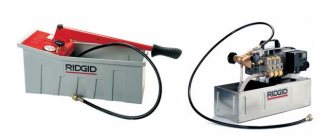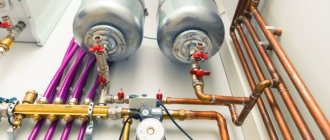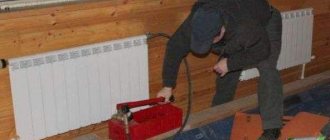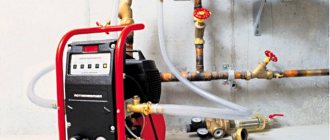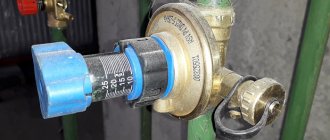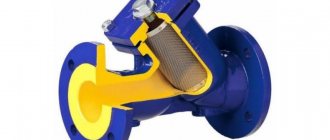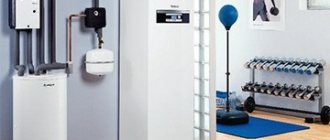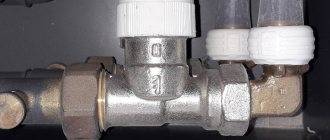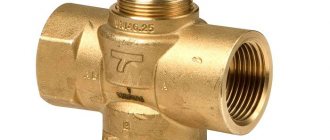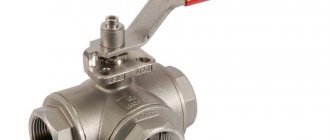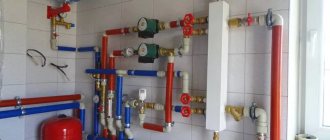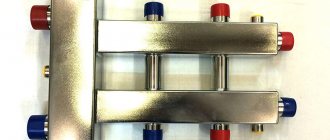In accordance with the rules for the safe operation of pipelines, boilers, vessels, during the construction, installation and repair of pipelines and plumbing, it is required to test the entire system or its individual elements for strength and density. Tests are carried out with water under pressure one and a half times greater than the working pressure. To carry out such operations, special pressure testing pumps, or pressure testing machines, have been developed. The editors of the Yanashla website offer a review of “The best crimpers for 2022”, compiled based on customer reviews and expert ratings.
What types of crimpers are there?
There are two main types: manual and electric. Let's look at each type in more detail.
Manual
Compact and lightweight stations with reservoir, piston pump, pressure gauge and check valve. They have a lot of positive qualities:
- They do not need to be connected to the mains, i.e. can be used even in an open field.
- They have very compact dimensions and light weight. One worker can easily deliver the unit to the testing site and install it into working position.
- The device is simple and reliable. Operation does not require special skills and can be entrusted to beginners.
- It is inexpensive both to purchase and to maintain.
The disadvantage of devices of this type is the need for physical effort during testing. Water is pumped into the network or container manually. Approximately the same way they once pumped water from street water pumps.
Despite their simplicity, manual crimping machines are capable of pumping pressure up to 60 bar into the pipeline. In order to pressurize a heating or water supply network, this is even a lot. The design is extremely simple. A piston pump with suction and discharge pipes, a check valve and an indicating pressure gauge is mounted on the upper edge of a small metal tank. The tank volume is usually 10-12 liters.
In addition to pressure testing of pipelines and containers, manual pressure testing machines can be used to easily set up and check the operation of safety valves.
Electrical
The productivity of electric crimpers is many times higher than that of manual models. The minimum pressure they can pump starts at 60 bar.
On a note! In technical language, pressure, as a characteristic of a pump, is sometimes denoted by the words “pressure” or “height of the water column.” One bar is equal to 10 meters of water column.
To test supply pipelines and containers of hydraulic equipment, devices are used that provide pressure up to 500 bar. Self-priming units, which in most cases are electric pressurizers, do not need to pour water into the suction pipe. They are capable of lifting water from the tank if they are located no more than one meter above it.
Unlike manual analogues, electric pressurizers can, if necessary, pump water into the network under test. In closed circuits of heating and process pipelines, an electric pressure test pump can be used to maintain pressure automatically. To do this, it is embedded into the circuit, complete with storage tanks and relief valves and sensors. Such installations are called “Elkomat” or “Gigamat” (pictured), depending on the power.
In addition to their main purpose, electric press machines can be used as mini-washers. If you have suitable attachments, they can be used to easily wash cars, windows, remove moss and dirt from slate roofs, etc.
The advantages of the electric crimping machine include the following characteristics:
- high performance;
- high-pressure;
- works in automatic mode;
- with mini-wash function;
- has compact dimensions and relatively light weight.
There are also some disadvantages:
- connected to the power grid;
- expensive;
- servicing is not cheap.
An electric pressure test pump costs significantly more than a manual one. There is no point in purchasing it for home use. This is professional equipment.
Procedure for working with a manual crimping machine
When working with a hydraulic manual crimping machine, follow the given procedure and follow the following rules:
- Remove air from the pressure units of the pressure testing pump. To do this, fill tank 2 with working fluid to the mark specified in the instructions and open shut-off valve 8, after which water is pumped several times until it comes out of pressure hose 3.
- Connect pressure hose 3 to the line under test. For connection, use an adapter fitting or nipple, included with the unit or purchased separately.
- Liquid is injected. Using gaskets, close all holes in the line and pump water until the required pressure is reached, then turn shut-off valve 8 until the tests are completed. Usually the test is carried out within several hours; some specialists run the pump during pressure testing for almost a day; a pressure drop indicates a leak in the system.
- Disconnect the pressure tester from the pipeline. To do this, open the drain valve 7 and wait for the water to completely flow back into the tank; at the end of the process, the drain valve is closed to prevent dirt particles from entering the pump. Disconnect the pressure hose from the inlet pipe of the main, lower it into the tank and release the injection units from water by opening valve 8.
Rice. 5 Example of using pumps for pressure testing in the tested line
To avoid corrosion of the parts of the pressure tester, it is recommended that after emptying it of water, pour a little machine oil into the tank and pump the pump several times - next time the pressure test of the heating system will take place in internal parts that have been cleared of moisture and corrosion. At the end of the work, the oil can be drained and reused in the future to clean the pressure tester.
How hydraulic testing of pipelines is carried out
Before considering the selection criteria, you should understand the algorithm for testing pipelines and containers for strength and density.
When starting tests, you should first make sure that the installation of the pipeline is completely completed. At home (in a country house or in a country house) this is done by visual inspection of the installed network. The absence of breaks, the presence of shut-off valves, plugs, etc. are checked. In production and construction, the installation organization prepares an act of handing over the installed pipeline or vessel for testing. Representatives of the contractor and the customer check the compliance of the installation with the project and confirm the document with signatures.
Before testing, the system or vessel is completely filled with water.
Important! It is necessary to fill the pipeline with water so as to displace all the air from the pipeline without any residue.
Unlike water, air is easily compressed and significantly complicates the process of hydraulic testing and operation of closed circuits. To remove it, taps or air release valves (air vents) are installed at the highest point of the pipeline. Water is supplied to the network with low pressure, rises from bottom to top, squeezing air through open vents. As soon as water flows out of them without air bubbles, they are closed. The system is full. You can start testing.
The pressure tester is connected to the pipeline with a rubber-fabric sleeve. Water (10-12 liters) is poured into the reservoir of the manual station. An electric self-priming device is placed next to a water tank and a suction hose with a filter is lowered there. Using a manual pump, water is pumped from the reservoir into the filled network, creating a pressure one and a half times greater than the working one. Control is carried out using a built-in pressure gauge.
When a given parameter is reached, the object is inspected for a certain time (regulated by rules) for leaks. At the same time, attention is paid to the condition of welds, threaded and flanged connections. At the same time, the pressure gauge readings are monitored. If the pressure gauge needle shows a decrease in pressure, the tests are considered successful, with the corresponding report being drawn up.
Features of operation
It is worth noting that there are two ways to check the tightness of pipes; the first uses air, and the second uses liquid. If it was decided to use air as a testing element, then it is necessary to use compressors for pressure testing of pipelines.
However, it is worth understanding that this option has several rather serious disadvantages. First of all, using this method, it will be quite difficult to determine exactly where the leak exists. In the case of using liquid, this is very simple.
When testing the system for leaks, the pump will operate for several hours, exerting increased pressure, essentially creating a stress load on the pipelines and components.
There are two types of compressors used to test the system: electric and manual.
Hand pump for pressure testing the heating system
The manually operated pump is quite simple in construction and operation. It has a sealed container designed for liquid, equipped with a plunger-type piston. Pressure is applied by using a lever attached to the reservoir in a hinged manner.
- The advantage of pumps using plunger pistons is that very high pressure can be obtained inside the pipes; the pusher piston is a wear-resistant metal cylinder.
- It is also worth knowing that the inner surface of the working cylinder is made in such a way that there are virtually no gaps there. This makes it possible to reduce the size of the seal rings, which in turn makes it possible to increase the pressure created by the pushing piston.
- To make it convenient to control the work process, the device has a built-in pressure gauge. After the liquid is pumped into the pipes in compliance with the required pressure level, the working chamber will be isolated from the general system through the operation of a shut-off valve.
The main difference between a manual pressure tester and an electric one is that the manual one is used to test small circuits; they can be used in dachas, private plots and country houses. In addition, they are much cheaper than the electric version and are very easy to use.
How to choose a crimping machine
Performance
The criteria for choosing such equipment are simple and few in number. First of all, you should determine the required performance of the unit. To test a section of a radiator or pipeline in a small country house, it is enough to purchase a manual pressure tester.
When testing small-volume utility networks or vessels in industry and utilities, it is also more convenient to use a small hand-held station. If installation and testing of industrial communications of large length and capacity are to be carried out, more productive installations with an electric drive will be needed.
Discharge pressure
When installing and servicing industrial pipelines of large length and impressive volume, high-performance pressure testing pumps are required. If hydraulic equipment with a working pressure of 150-200 bar is to be tested, a manual device will not cope with the task. You will need an electric crimping machine with increased power, capable of reaching this figure to 500 bar.
Price
One of the important criteria for choosing a crimping machine. This is where manual units win. Their cost is several times lower than that of electric machines. However, even small installation and repair organizations with a regular income are able to purchase an electric unit if work is planned on large objects of considerable length and volume.
The best manufacturers
When choosing a pressure testing pump, it is worth finding out more about its manufacturer. This is perhaps the most important thing to consider, after its cost and performance. In pursuit of cheapness, you can buy a device that will not last long. A product from a reputable manufacturer will serve its owner well for many years.
Here are just a few companies whose products are in high demand among professionals and experienced users.
Zitrek
Czech company. It was founded in Prague. She produced hand tools that were used to extract silver in mines. Today it is one of the recognized world leaders in the production of construction equipment. The range includes hand, electric and pneumatic tools for almost all construction operations from landscaping and finishing work to installation of utility networks. Zitrek offers both individual models and sets of equipment for various purposes. All products are of high quality and reliability.
Interesting! "Zitrek" means "tomorrow" in Czech.
Megeon
Russian manufacturer of instruments for special measurements, such as control of technolytic processes, reference measurements, quality control of installation work, etc. Budget and precision Megeon instruments are in high demand among engineers, metrologists, and technicians. According to the company's orders, the best specialists from domestic and foreign companies, who have passed a competitive selection and are certified according to the European quality standard ISO 9000, take part in the development of products. The finished products are tested and certified for compliance with GOST.
Caliber
Trademark of a Russian manufacturer. Specializes in the design and production of hand and power tools. The popularity of the Caliber models is explained by their decent quality and affordable price. Production facilities are located in China. Before entering the Russian market, the quality of products is thoroughly checked. Feedback and wishes of customers are carefully considered at the head office of the enterprises and taken into account in the following developments.
Voll
The company produces professional equipment and tools for installation and repair of pipelines for various purposes. The main production is located in the People's Republic of China, partially in Russia. The brand's popular models are not inferior to products from well-known European companies in terms of quality, performance and durability, but are much more affordable.
MGF
Italian company. Since 1975, it has been producing sanitary equipment. Since 1990, the company began producing thread-cutting equipment and installation tools. In addition, its manual and electric pumps and pipe benders are always in demand on the market. Having survived all the financial crises and withstood fierce competition with European and Asian manufacturers, MGF remains one of the world leaders in the production of such products, thanks to modern production methods and labor organization.
Rothenberger
Manufacturer from Germany. Specialization - equipment and tools for installation and maintenance of devices for various purposes, ventilation and air conditioning systems, equipment for drilling with diamond tools. The company is a recognized European leader in these areas and can amaze the most demanding customer with its rich assortment.
On a note! Rothenberger is part of the Rothenberger AG group of companies, which includes many well-known European manufacturers: French Virax, Kroll, Rico and Helmers from Germany, Super Ego from Spain.
Ampika
The Russian company has sufficient experience in the design, development and creation of pumps for domestic and industrial purposes, including drainage, fecal, membrane and centrifugal, well and barrel pumps, fuel meters, manual and electric pressure testers. In addition, the company is an official dealer of three dozen Russian factories engaged in the production of pumps. But that's not all. At Ampika production bases in Moscow and the region, small pumping units are accepted for repair.
Messer
Korean manufacturer of tools used to cut and process reinforced concrete structures. Moreover, the processing is very precise, and the tool has diamond cutting edges.
On a note! The company produces discs, bits and diamond wires that easily cut reinforced concrete, granite, marble, asphalt and metal.
The production of pressure testing pumps cannot be called the main activity of the company. Nevertheless, Messer products are in demand among professionals. They are simple, reliable in operation and sold at affordable prices.
It is up to the buyer to decide which company is better to buy a crimping machine. Before purchasing, it is advisable to listen to the advice and recommendations of experienced users, clarify the technical specifications and study the description of the device. Each pump comes with step-by-step instructions. Before starting work, you should read it carefully. You need to find out how much the model you are interested in costs. The decision to purchase or reject it depends not least on this.
Why is pressure testing of the heating system necessary?
Not only the provision of hot and cold water to residents, but also their safety completely depends on the regularity of testing of heating and water supply systems.
Pipelines that are not maintained for a long time can become severely rotted, causing a rupture that can cause a serious accident.
Elimination of which will be much longer and more difficult than routine testing.
Where can I buy
First of all, you should consider purchasing from specialized stores that sell construction and installation tools. Here you can see the product “live”, examine it from all sides and even try it in action.
Option two is to order online from an online store. It is better if it is a trusted resource to be sure that the delivery will not be delayed and that the product will be sent in good quality and in good condition.
It wouldn’t hurt to visit the manufacturer’s official website. On its pages you can find out what new products the manufacturer is offering this year, clarify their technical characteristics, and find out how inexpensive models differ from premium products. This information will help you make the right choice.
Rating of quality pressure testing pumps
Manual models
5.Megon 98060
The test pump consists of a reservoir with a capacity of 10.5 liters, the pump itself and an indicating pressure gauge. For connection to the system under test, a rubber-fabric sleeve with a G ½” thread is provided. The device creates a pressure of 60 bar. By energetically operating the ergonomic handle, you can pump 61 liters of water into the system in a minute. This is its maximum performance. The material of the cover and body is galvanized metal. Dimensions 160x400x330 mm. Weight without water – 4.2 kg. According to buyers, it is an excellent device for conducting hydraulic tests of sanitary systems, technological communications, vessels, heat exchangers, etc. The average price is 4900 rubles.
Megon 98060
Advantages:
- compact;
- easy;
- productive;
- inexpensive.
Flaws:
- not identified.
4. Caliber OPN-50
The compact manual unit is used for hydraulic testing of pipeline systems for various purposes, vessels and tanks as part of the equipment of boiler houses and gigamates. The hand pump is mounted on a tank with a volume of 12 liters. With one movement of the handle, 45 ml of water is supplied to the system. The maximum pressure generated by the installation is 50 bar. The increase in the parameter in the system under test is monitored using a pressure gauge included in the delivery kit. Station dimensions: 250x280x190 mm. Connection to the test object is made with a DN ½ '' rubber-fabric sleeve (included in the kit). Compact dimensions and light weight, budget price, make the “Caliber OPN-50” station convenient and very popular in public utilities. The average installation price is 5930 rubles.
Caliber OPN-50
Advantages:
- compact dimensions;
- functionality;
- affordable price.
Flaws:
- low productivity.
3.Voll V-Test 50R
Manual crimping machine of a Russian brand, Chinese assembly. Can work with water and fluids used in hydraulics. Designed for testing utility networks in industry, housing and communal services and at facilities under construction. The steel container holds 12 liters of liquid. The pump creates a maximum pressure of 5.0 MPa. The parameter is monitored using a built-in pressure gauge. The systems under test are connected to a rubber-fabric hose with a diameter of ½ inch. Dimensions: 500x200x400 mm. Weight – 8 kg. The average price is 9599 rubles.
Voll V-Test 50R
Advantages:
- lasting;
- pump parts are made of brass;
- has two built-in pressure gauges.
Flaws:
- solid dimensions and weight.
2.MGF Compact-60
The Italian device is perfect as a test pump for heating and plumbing systems. Mounted on a rectangular tank with a volume of 12 liters. Maximum discharge is 60 bar. To monitor the result, a built-in pressure gauge filled with oil is used to prevent sudden fluctuations of the needle. The station's productivity per cycle ranges from 11 to 22 cubic meters. see water. Accessories: pressure gauge, check valve, hose with connecting diameter G 1/2''. The average cost is 16,931 rubles.
MGF Compact-60
Advantages:
- simplicity;
- reliability;
- expanded functionality.
Flaws:
- Expensive;
- low productivity.
1.Rothenberger TP 25
The best reviews from professional installers and repairmen involved in the installation and operation of heating and water supply networks are received by a manual pressure testing pump manufactured by the German company Rothenberger. Our review presents the TP 25 model. The maximum height of the water column that such a station provides is 250 meters (25 bar). This is not sufficient for testing piping intended to control hydraulic equipment, where the hydraulic fluid pressure rarely drops below 50 bar. But for heating, water supply and gas environments it is quite suitable.
The volume of its water tank is only 4.5 liters. This is enough to test the system for density with a pressure exceeding the operating pressure by 1.5 times. But it is easy for the installer to carry the device with dimensions: 380x215x156 mm and a weight of 4.5 kg from object to object. The performance of the model is 16 ml of water per cycle. The connecting diameter of the device and the rubber-fabric sleeve is 1/2 inch.
Professionals involved in the maintenance and repair of industrial networks of circulating water, heating, gas and air supply will be able to appreciate all the advantages of this model. Its average price is 22,532 rubles.
Rothenberger TP 25
Advantages:
- easy;
- compact;
- lasting;
- durable.
Flaws:
- Expensive.
Electric crimp pumps
5.Megeon 98160
With an electric pressure testing pump, testing of pipelines and containers is carried out many times faster than with manual stations. The Megeon 98160 pressure tester with a capacity of 156 l/hour will increase the test pressure to 7 MPa in a filled system in a matter of minutes. Package Included:
- plastic tank with a volume of 17 liters;
- adjustable pressure reducing valve;
- pressure gauge;
- pressure and suction fittings;
- rubber-fabric sleeves DN 3/4" and 1/2";
- filter element on the suction hose.
Dimensions of the assembled device: 200x250x330 mm. Weight – 9 kg. The average price is 34,918 rubles.
Megeon 98160
Advantages:
- creates high pressure;
- high performance;
- low noise.
Flaws:
- Expensive.
4.Voll-Test 60/3
An electric pump used for feeding pipelines and testing the strength and density of heating, water supply, ventilation, and gas supply systems. In a minute it pumps up 3 liters of water, increasing the pressure to 60 bar. Equipped with a 250 watt motor. Not used as a booster pump. It has dimensions of 220x260x300 and a weight of 13.8 kg. Included:
- indicating pressure gauge with glycerin filling;
- metal case;
- two r/t sleeves DN ½ inch.
The average price of the product is 19,565 rubles.
Voll-Test 60/3
Advantages:
- self-priming;
- with precise pressure gauge;
- with adjustment capabilities;
- Convenient to carry.
Flaws:
- high price.
3.Ampika ENA-60
Electric crimping machines of the ENA series from the Ampika company cope well and quickly with injecting test pressure into pipelines and elements of engineering systems. There is no need to fill the pump suction port with water before starting. It is self-priming and will handle this itself if the water tank is located at least one meter from the location of the device. Switching on and off is performed by a button on the body. There is also a warning light there.
The station parts are made of steel and brass and are not afraid of corrosion. The delivery set includes a spray tip that allows you to use the device as a sink, two r/t sleeves, and a plastic water container with a volume of 20 liters. The device is capable of increasing the pressure in the system to 60 bar. The average cost of installation will be 19,400 rubles.
Ampika ENA-60
Advantages:
- spacious water container;
- high test pressure;
- can be used as a sink.
Flaws:
- expensive.
2.Messer TH 400
Korean crimper with electric drive. In addition to its main purpose, it can be used as a window and car wash and a sprayer of garden chemicals. An electric drive with a power consumption of 0.37 kW operates from a 220 V network. Pumps 7.5 liters of water per minute. Increases pressure up to 30 bar. It is equipped with a coarse filter, a pressure r/t hose and a two-meter hose for water intake, indicating a pressure gauge. The average price is 34,918 rubles.
Messer TH 400
Advantages:
- compact;
- high performance;
- multifunctional.
Flaws:
- Expensive;
- produces low pressure.
Scope of application of pressure testing pumps
A comprehensive measure of checking water communications can be carried out in several cases:
- Immediately after completing the assembly and installation of the heating system, before putting it into full operation
- After replacing pipes, risers, individual sections of the system and components
- During the period of necessary preparation for winter, when it is necessary to check the suitability of pipes for supplying hot water under a certain pressure
In case of detection of units and pipes of water communication that were subject to corrosion, or were deformed or completely destroyed as a result of any reason
